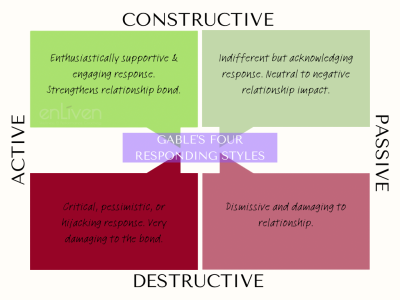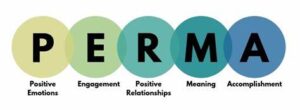Strengthening Relationships Through Communication
Steph’s heart sank as she hurried into the living room, clutching her earlobe. Chris, was engrossed in a crossword puzzle, unaware of the distress that was about to shatter their evening.
“Chris,” Steph began, her voice quivering, “I… I can’t believe it. I’ve lost one of Grandma’s earrings. The ones she gave me for my birthday just before she passed.”
Chris looked up, brows furrowing. “You lost it? Seriously, Steph? How could you be so careless?”
Tears welled up in Steph’s eyes. “I was out running errands, and when I got home, it was gone. I think it must have caught on my purse strap and slipped out of my ear.”
Chris sighed, frustration evident. “This is unbelievable, Steph. Why would you wear a family heirloom to run errands?”
Chris, clearly irritated, leaned forward. “You’re so irresponsible. We need to find it, and you better retrace your steps and search everywhere.”
Steph felt a surge of frustration. She had expected support and understanding, not criticism from her spouse. “Chris, I’m already upset enough as it is. I don’t need you berating me right now. Will you come with me to look for it?”
Chris’s expression remained stern. “Well, Steph, stupid actions have stupid consequences, and you need to take responsibility for this. This isn’t my problem to solve.”
Tears streamed down Steph’s cheeks as she turned away, feeling not only the loss of the earring but also the hurtful distance that had grown between the pair. In that moment, it seemed that the earring was not the only precious thing slipping away.
Have you ever been in a conversation like this? Most of us have. In fact, if we’re honest, most of us have delivered the soul-crushing response from time to time and probably felt justified in pitching it at that moment.
Communication Style Matters
This exchange is an example of what psychologist Shelly Gable called active destructive responding. Communication serves as the foundation of relationships. How we respond when others share information reveals a great deal about the strength of our connections. Whether responding constructively or destructively to the news others choose to share with us, our reacting style shapes the quality of not just that communication, but the tenor of our greater relationship. As Gable’s research showed, active destructive responding is a proven communication and relationship destroyer while its counterpart, active constructive responding is a proven communication and relationship enhancer. This article will explore Gable’s four response styles (active constructive, passive constructive, active destructive, and passive destructive), explain why active constructive responding improves communications, and offer research-backed techniques to strengthen responding skills. With effort, we can foster richer bonds by communicating actively and constructively.
See how the scenario between Steph and Chris might have proceeded by clicking the links below.
Steph's heart sank as she hurried into the living room, clutching her earlobe. Chris, was engrossed in a crossword puzzle, but looked up as soon as he heard her distressed voice.
"Chris," Steph began, her voice quivering, "I... I can't believe it. I've lost one of Grandma's earrings. The ones she gave me for my birthday just before she passed."
Chris's eyes widened, concern evident. "You lost it? Seriously, Steph? That's terrible! How did it happen?"
Tears welled up in Steph's eyes. "I was out running errands, and when I got home, it was gone. I think it must have caught on my purse strap and slipped out of my ear."
Chris got up, compassion clear. "This is awful, Steph. I'm so sorry for you. I can’t imagine how that feels! Tell me more about how you're feeling."
Steph felt a surge of gratitude. She had expected anger or blame, not empathy and support from her spouse. "Chris, I'm really upset. I feel like I've let Grandma down. She loved those earrings so much and wanted me to have them."
Chris hugged her, comfort evident. "Steph, you didn't let Grandma down. She loved you more than anything and she would understand that accidents happen. You're not irresponsible, you're human."
Chris, clearly supportive, leaned back. "Steph, we need to find it, and I'm here to help you. Let's retrace your steps and search everywhere together."
Steph smiled through her tears as they held hands, feeling not only the hope of finding the earring but also the warmth of the connection that had grown between the pair. In that moment, it seemed that the earring was not the only precious thing worth keeping.
Steph's heart sank as she hurried into the living room, clutching her earlobe. Chris, was engrossed in a crossword puzzle, unaware of the distress that was about to shatter their evening.
"Chris," Steph began, her voice quivering, "I... I can't believe it. I've lost one of Grandma's earrings. The ones she gave me for my birthday just before she passed."
Chris glanced at her, boredom evident. "You lost it? Seriously, Steph? That's too bad."
Tears welled up in Steph's eyes. "I was out running errands, and when I got home, it was gone. I think it must have caught on my purse strap and slipped out of my ear."
Chris shrugged, indifference clear. "This is unfortunate, Steph. But what can you do? It's just an earring."
Chris, clearly uninterested, looked down. "Steph, can you be quiet for a minute? I'm trying to finish this puzzle. It's a really hard one."
Steph felt a surge of hurt. She had expected sympathy or help, not apathy and dismissal from her spouse. "Chris, I'm really upset. I feel like I've lost a part of Grandma. She loved those earrings so much and wanted me to have them."
Chris sighed, annoyance evident. "Steph, you're overreacting. It's not like you lost Grandma herself. She’s been gone for 10 years. You still have the other earring and her memories."
Chris, clearly impatient, leaned away. "Steph, you’re not going to find it, and I'm not going to waste my time looking for it. It's probably long gone anyway."
Tears streamed down Steph's cheeks as she turned away, feeling not only the loss of the earring but also the coldness of the distance that had grown between the pair. In that moment, it seemed that the earring was not the only precious thing slipping away.
Steph's heart sank as she hurried into the living room, clutching her earlobe. Chris, was engrossed in a crossword puzzle, but looked up as soon as he heard her sad voice.
"Chris," Steph began, her voice quivering, "I... I can't believe it. I've lost one of Grandma's earrings. The ones she gave me for my birthday just before she passed."
Chris nodded, sympathy evident. "You lost it? Seriously, Steph? That sucks."
Tears welled up in Steph's eyes. "I was out running errands, and when I got home, it was gone. I think it must have caught on my purse strap and slipped out of my ear."
Chris smiled, encouragement clear. "This is unlucky, Steph. But don't worry, maybe somebody will turn it in at the store."
Chris, clearly distracted, looked back at his puzzle. "Steph, I really am sorry for your loss. You know I loved your Grandma too."
Steph felt a surge of disappointment. She had expected more than a brief or vague affirmation from her spouse. "Chris, I'm really upset. I feel like I've lost a part of Grandma. She loved those earrings so much and wanted me to have them."
Chris shrugged, acceptance evident. "Steph, it's okay to be upset. But you have to move on. You still have the other earring and her memories."
Chris, clearly busy, leaned forward. "Steph, I'm sure you did your best to find it. But let's keep it in perspective. It's just an earring."
Tears dried on Steph's cheeks as she turned away, feeling not only the loss of the earring but also the lack of empathy from her spouse. In that moment, it seemed that the earring was not the only precious thing worth cherishing.
Improving Communication Skills through Response Styles
Gable outlined four main response styles based on two dimensions: active/passive and constructive/destructive. Each impacts communication in different ways both in the moment and long-term. Learning to identify these styles provides the first insights into improving communication abilities.

Active constructive responding displays full engagement with positive messaging via enthusiastic questions and praise. For example, “Congratulations, that’s wonderful news! Tell me all about it. How are you feeling?” This style builds trust and rapport through validating emotional reactions.
Passive constructive responses like “That’s nice” demonstrate positivity but lack deeper interest and inquiry. While subtly supportive, overuse of this style conveys disconnection.
Active destructive responses criticize and shift attention to negatives. “Do you really think you deserved that promotion?” This tendency hinders communication by putting others on defense.
Finally, passive destructive responses signal ignoring or dismissing the speaker altogether which communicates disregard. Change of subject or distraction severely damages communication bonds.
John Gottman, relationship therapist and author of a number of books including The Seven Principles for Making Marriage Work, concluded in his research that active constructive responding was a key predictor of relationship longevity and satisfaction. This shows the power of engaged, enthusiastic responding for building strong connection through communication over the long haul.
The Power of Active Constructive Responding
Active constructive responding represents a speaker’s emotional experiences while also encouraging additional sharing through engaged prompts. This dual focus fosters mutual understanding critical for interpersonal communication skills.
Psychologist Mark Goulston, author of The 6 Secrets of a Lasting Relationship, compares highly constructive responding to giving someone “an emotional hug.” It makes the speaker feel valued, validated, and heard – the building blocks of positive communication.
In contrast, destructive and passive reactions communicate a lack of interest and care even when this is not the intention of the exchange. This leads to poorer communication outcomes including reluctance to open up in the future. Over time, unconstructive responses degrade relational bonds by sapping intrinsic motivation to invest in high-quality communication. In fact, high-quality communication is often directly avoided to skirt these high conflict-inducing exchanges.
Research also shows active constructive responding boosts positive emotions in both the listener and speaker by generating an upward spiral of positivity. Barbara Frederickson labeled this the “broaden and build” phenomenon. Constructive responding broadens mindsets while building resources – in this case stronger communication abilities.
Ultimately, studies demonstrate active constructive responding improves communication across contexts ranging from work to family to romance. People feel comfortable expressing themselves and confident they will be met with empathy and understanding.
Strategies for Improving Communication Through Better Responding
Here are research-backed techniques for enhancing communication by becoming a more active, constructive responder:
- Assess your current style – Are you actively engaged or passively listening? Constructive or destructive in tone?
- Consider reflecting and journaling about select conversations a few nights a week.
- Describe the scenario.
- Describe your response style and why you might have responded that way.
- Consider if you used the strategies below and write about it.
- Describe how you might have used another response style and how the conversation might have differed.
- Focus completely on the speaker – Avoid distractions and be fully present.
- Ask exploratory questions – “Can you tell me more about that?” Dig for deeper understanding. If you’re unsure if your conversation partner wants to talk more about it, you can ask.
- Paraphrase content and feelings – “It sounds like you felt really anxious during that presentation.”
- Express support and validation – “I can understand why you would feel that way.”
- Mind body language – Nod, smile assuringly, and lean in to show interest.
- Contribute encouraging comments – “You handled that situation really well.”
- If you’ve gone passive or destructive, pivot to constructive – “While it’s good to consider implications, I’m sure your skills are up to the task.”
- Finally, if you’ve responded in a passive constructive manner because it isn’t a good time to talk, a statement such as, “I really want to hear more about this. Can I check back in later?” is a way to preserve a strong line of communication.
Keep in mind that improving communication is a continuous process. Monitor your progress and celebrate gains while always looking for opportunities to respond even more constructively.
Passive communication and self-sabotage can be detrimental to relationships. If you find yourself communicating your displeasure in a relationship passively, it’s important to consider the implications of this approach and your reasons for choosing not to directly communicate. If you believe that you are trying to sabotage the relationship, whether consciously or not, it’s important to reflect on why you might be doing so and consider a more effective way forward. An article from Psychology Today discusses five reasons why people may self-sabotage love. The article by psychology writer, Arash Emamzadeh, notes that people may self-sabotage love for various reasons, such as fear, poor self-esteem, trust issues, high expectations, and inadequate relationship skills. Many of these reasons may also apply to other types pf relationships. The article also provides strategies for maintaining romantic relationships, such as trust, open communication, commitment, creation of safety, and mutual acceptance.
Building Stronger Connections Through Mindful Communication
As the research shows, active constructive responding builds trust, expresses empathy, and fosters mutual understanding – prerequisites for strong communication skills. Our communication choices shape our relationships. We can passively allow connections to wither through unconstructive reactions or actively nurture them via constructive responding.
Shelly Gable concluded that active constructive responding above all other styles has the “power to build flourishing relationships.” It demonstrates genuine interest while making others feel cared for, understood, and validated – the foundation of good communication. While no one responds constructively all the time, we can all communicate in ways that bring people together rather than push them apart. Mindfully listening, participating with care, and responding with empathy allow us to build the strong personal and professional relationships that make life meaningful.
Great Things Never Came From Comfort Zones
Say goodbye to that rut you’ve been stuck in and hello to a brighter future with enLiven Wellness Life Coaching team. Get started today by scheduling a consultation with our team.
Related Resources
enLiven Wellness Coaching, llc is a participant in the Amazon Services LLC Associates Program, an affiliate advertising program designed to provide a means for website owners to earn advertising fees by advertising and linking to amazon.com, audible.com, and any other website that may be affiliated with Amazon Service LLC Associates Program. As an Amazon Associate [I or we] earn from qualifying purchases.
Additional Articles in this Series
This article is part of a series of articles on the five pillars of well-being. The pillars are positive emotion, engagement, relationship, meaning, and accomplishment.

















